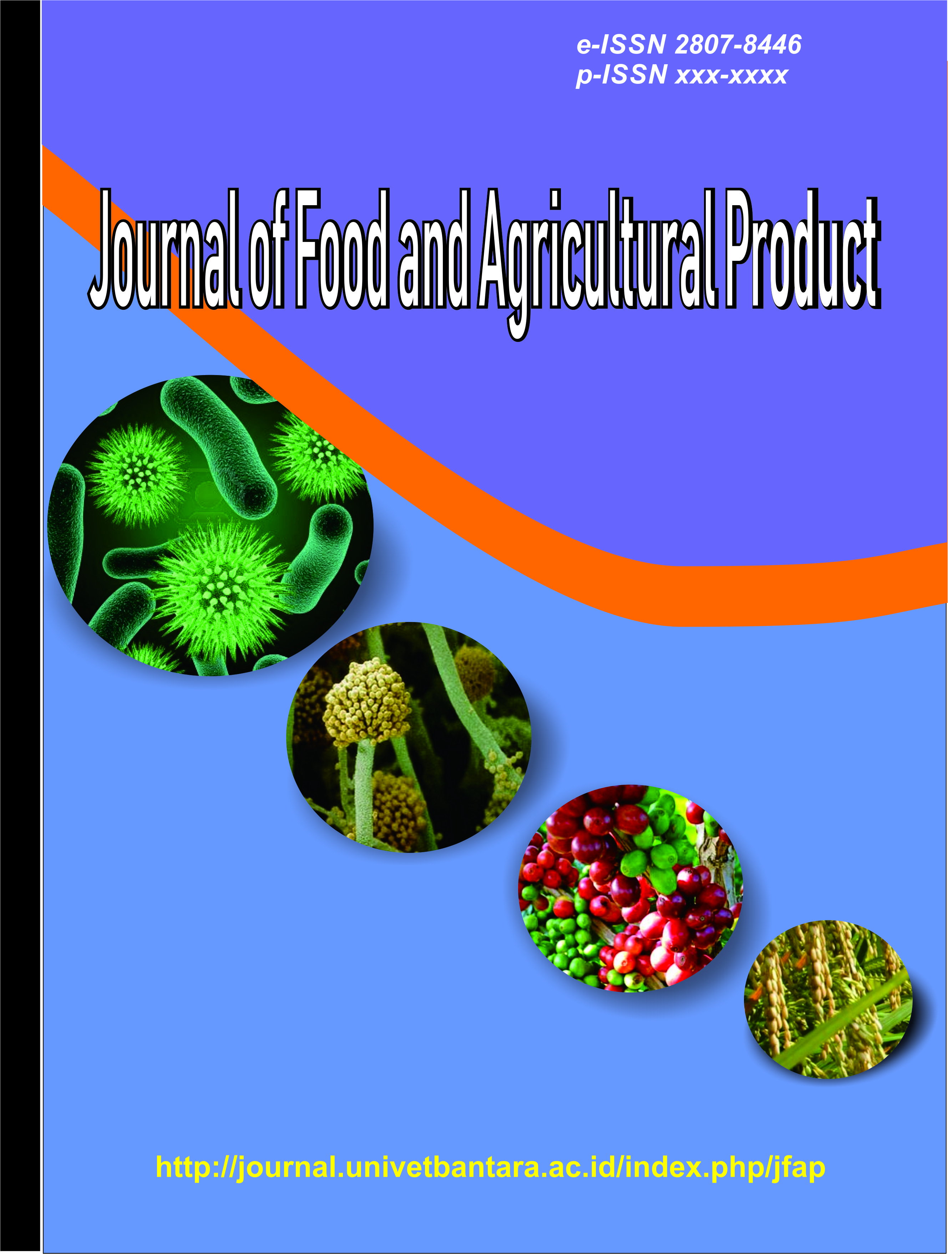Exploration of Chlorella Sp. Microalgae Oil Extraction Method for Biodiesel Production
DOI:
https://doi.org/10.32585/jfap.v5i2.7046Abstract
The decline in the availability of fossil fuels has driven the need for more sustainable alternative energy sources. Microalgae, particularly Chlorella sp., is one of the potential biomasses for biodiesel production due to its high lipid content, rapid growth, and lack of competition with food crops. This article aims to comprehensively review various methods of oil extraction from Chlorella sp. and assess their effectiveness and challenges to support the use of microalgae as a raw material for biodiesel. The methods reviewed include maceration, Soxhlet, microwave-assisted extraction, and ultrasonic-assisted extraction. The analysis was conducted by examining the working principles, parameters affecting the results, oil yield, advantages, and limitations of each method. The results of the review show that ultrasonic-assisted extraction has the advantage of producing higher yields in a shorter time, lower solvent consumption, and safer operating temperatures compared to other methods. However, its application on an industrial scale still faces technical and economic obstacles. This study concludes that combining modern methods with the use of environmentally friendly solvents and pilot-scale testing is an important direction for further research to support efficient and sustainable biodiesel production.
Keywords: Chlorella sp., biodiesel, oil extraction, ultrasonic extraction, microwave extraction
Downloads
Downloads
Published
How to Cite
Issue
Section
License
Copyright (c) 2025 Dandy Kusuma Wardana

This work is licensed under a Creative Commons Attribution-NonCommercial-ShareAlike 4.0 International License.



